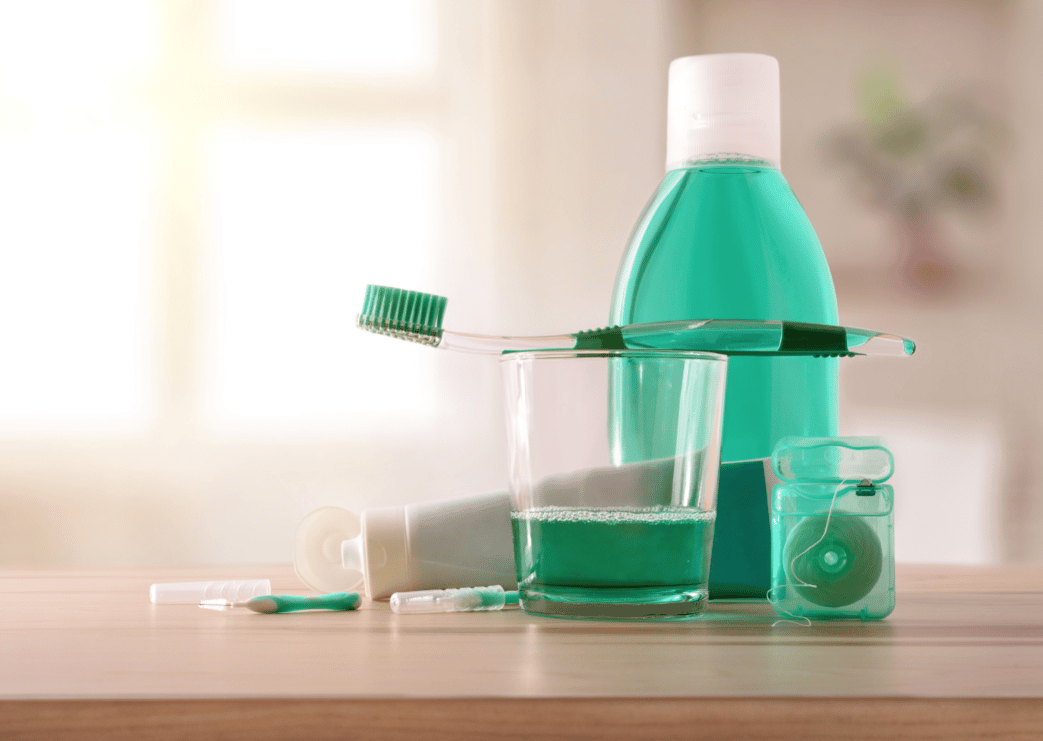Oral Health Tips for National Dental Hygiene Month


October might be most celebrated for being the month of horror films and Halloween festivities, but it’s also National Dental Hygiene Month. This comes just in time to counteract all the candy your kids will soon bring home from trick-or-treating! As a result, October is a great time to brush up on what good dental hygiene looks like.
Brush for Good Dental Hygiene
Brushing your teeth is a fundamental aspect of good oral health. By scrubbing tooth surfaces daily, you can help prevent cavities. Stimulating your gums and removing plaque from along the gum line can also help prevent gum disease. Here are some basic tooth-brushing tips to improve your dental hygiene.
Brush twice a day
Make brushing a part of your morning and bedtime routines. Don’t rush—for a thorough job, you should brush for at least two minutes, or 30 seconds per quadrant. Wait for 30 minutes after eating to brush, and don’t forget to clean your tongue, which harbors bacteria that can cause bad breath.
Use the right equipment
Pick a small-headed, soft-bristled toothbrush that fits comfortably in your mouth. If you are prone to plaque and gingivitis, consider using an electric toothbrush. Also, unless your dentist directs you otherwise, brush with fluoride toothpaste for the best results.
Brush with good technique
Hold your toothbrush so the bristles run along your gums at a 45-degree angle. Use short, gentle, back-and-forth motions to scrub your teeth without irritating your gums. Remember to brush every side of each tooth, including the front, back, and biting surface.
Keep your toothbrush clean
Bacteria like to hide on your toothbrush, so rinse the bristles thoroughly after each use. Then, store your toothbrush upright to encourage a quick dry time. Refrain from regularly storing your toothbrush with a cover or in a closed container, which can promote mold growth.
Know when to replace your toothbrush
Buy a new toothbrush (or toothbrush head for your electric model) every three months. If the bristles fray or you get sick within that timeframe, replace your toothbrush sooner.
Floss Each Day
Even the most thorough brushing leaves bacteria in the tight spaces between each tooth and under the gum line. To remove plaque, food particles, and bacteria from these areas, be sure to floss once a day. It doesn’t matter when you do it—just make sure it gets done!
Use enough floss
An 18-inch piece gives you enough room to work without the floss slipping out of your grip. Wrap the floss around your middle fingers and hold it between your thumbs and forefingers. Readjust the position of the floss on your fingers to use fresh floss as you work your way around each tooth.
Be gentle
As you guide the floss between your teeth, avoid snapping it against your gums. Then, rub the floss along the side of each tooth. Use an up-and-down motion rather than a sawing motion to avoid hurting your gums.
Get between every tooth
Focus on making sure you don’t miss a spot. Also, make sure you get behind your rear molars. Even though two teeth don’t touch here, the scraping motion of the floss is useful for removing hard-to-reach plaque.
Try non-traditional floss
If you find it difficult to floss, try a non-traditional option, such as a dental pick, pre-threaded flosser, or water flosser.
Use Mouth Rinse for Extra Protection
Your teeth account for less than half of the surfaces in your mouth, so rinsing is important to remove biofilm and bacteria that brushing and flossing leave behind. Mouth rinse isn’t a substitute for either one, but it can supplement your other dental hygiene efforts to reduce the chance of tooth decay and infection.
When selecting a mouth rinse, find one with antimicrobial properties to reduce bacteria and plaque activity. Fluoride is also a beneficial ingredient to protect your teeth from decay. Consider a whitening peroxide rinse to fight tooth discoloration and staining.
Chew Sugarless Gum
According to the American Dental Association, chewing sugarless gum after a meal is an effective way to prevent tooth decay. It stimulates saliva flow to help wash away food particles and neutralize the pH in your mouth. Plus, it freshens your breath and may even help prevent tooth staining.
See Your Dentist
At-home oral care is vital for good overall dental hygiene, but you also need regular trips to the dentist. Professional cleanings, exams, and X-rays keep your teeth and gums healthy and help you catch problems when they’re still easy to treat.
Schedule preventative dentist visits every six months. If you have dental insurance, your plan should cover the cost of these visits. Of course, you should also see the dentist anytime you have an oral health concern, such as tender or swollen gums, tooth pain, persistent bad breath, or a loose permanent tooth.
Our Boulder dentist, Dr. Ania, can help you maximize your dental hygiene efforts. From routine cleanings that remove surface stains to restorative bonding or porcelain veneers, our comprehensive dental services will have you smiling with confidence this October and beyond! To learn more about caring for your teeth, or to schedule a consultation, please call Dr. Ania at 303-443-0998.


